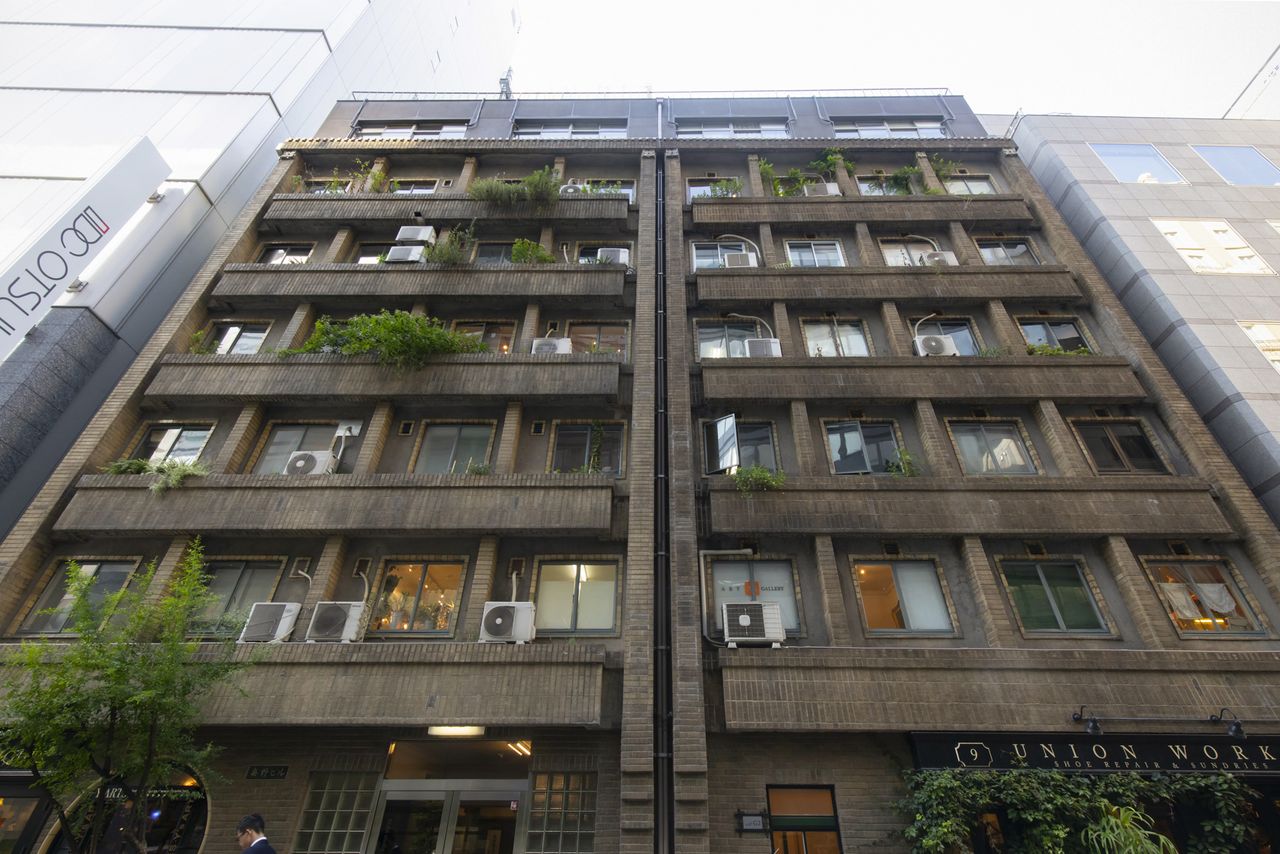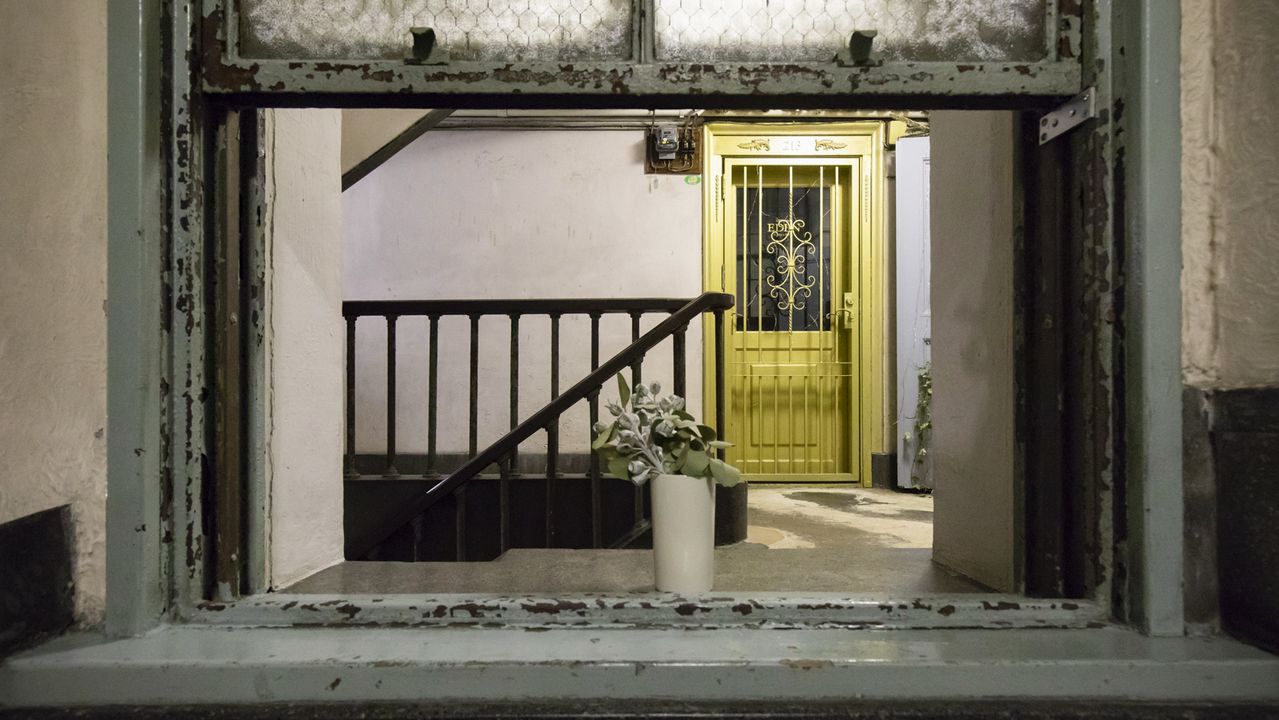
Ginza’s Okuno Building: A Slice of Tokyo’s Early Twentieth Century
Guideto Japan
Lifestyle Art Travel- English
- 日本語
- 简体字
- 繁體字
- Français
- Español
- العربية
- Русский
Luxury Built to Last
In Ginza 1-chōme, not far from the Kyōbashi district to the north, stands the Okuno Building, an early modernist structure dating to the early Shōwa era (1926–89). Tucked in between the modern office buildings and shopping complexes of the glitzy, ultramodern commercial storefronts in Ginza, this building stands out.
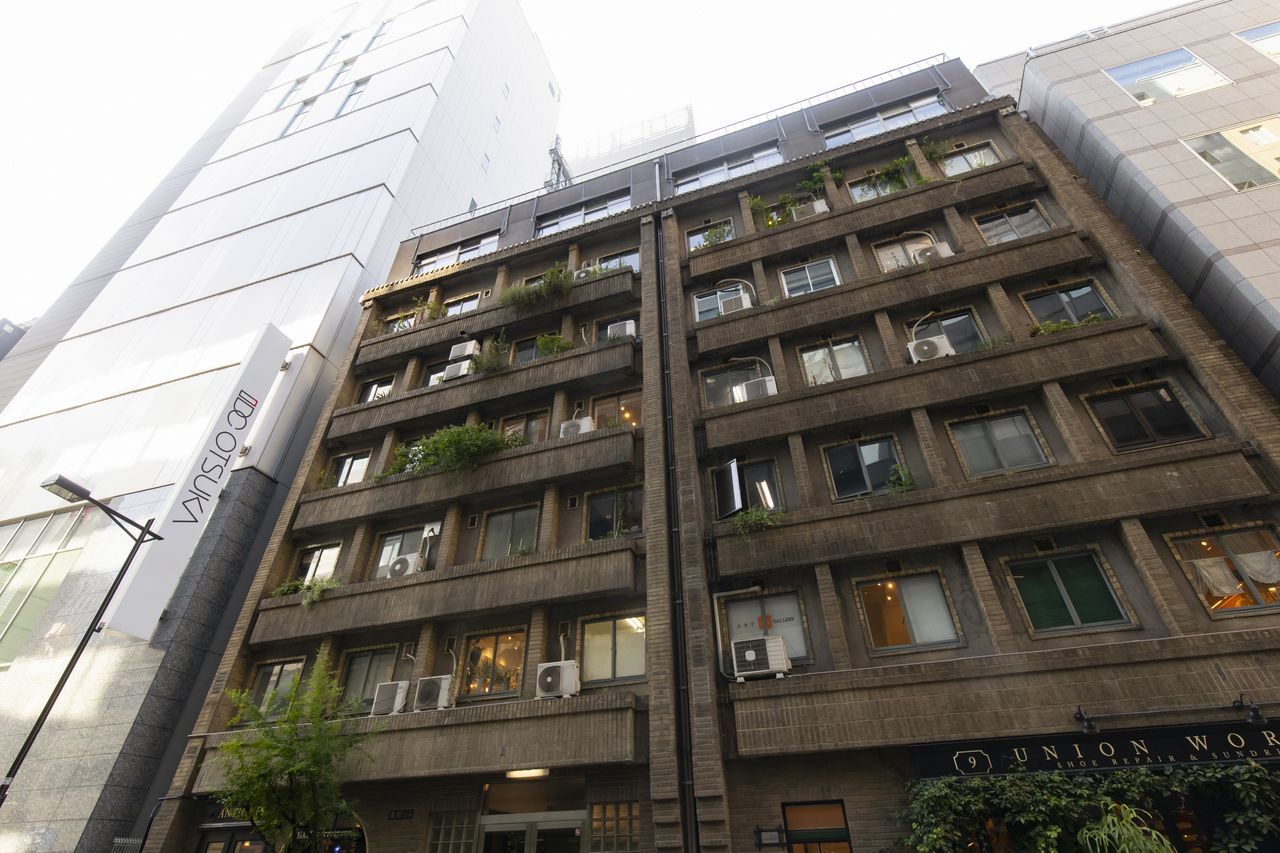
The stately exterior of the Ginza Okuno Building.
The building may already be familiar to art aficionados, at least by name, given the renowned art galleries among its tenants. The first floor houses antique shops, while the second through the sixth floors are occupied by small art galleries, shops, and private business offices. Dozens of businesses in all rent space here, all steeped in the building’s historical atmosphere. Even the elevator doors on each floor are maintained in their original, manually operated style. And it seems that more and more people, including foreign tourists in increasing numbers, are coming to experience the building itself, in addition to visiting the various galleries and shops it contains.
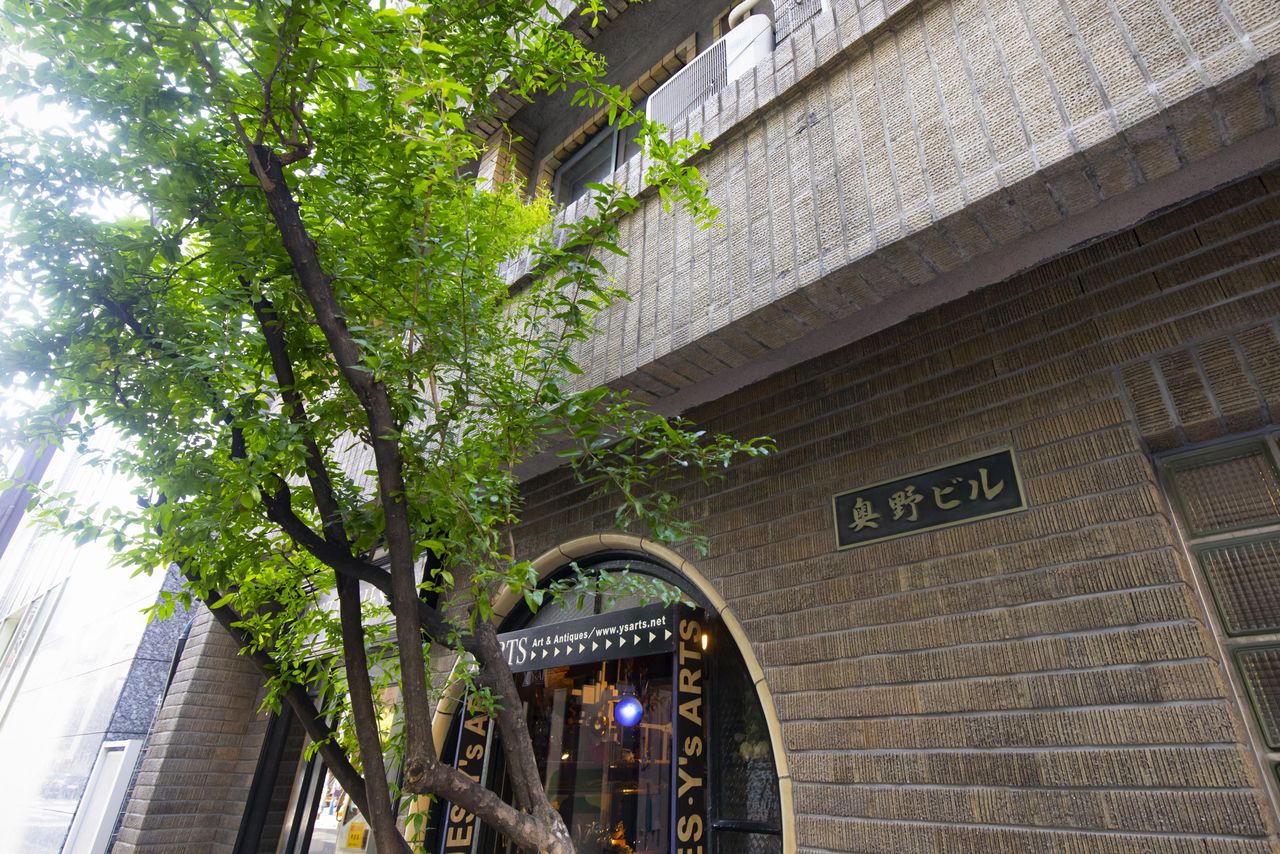
The sign and round window of an antique shop near the building entrance.
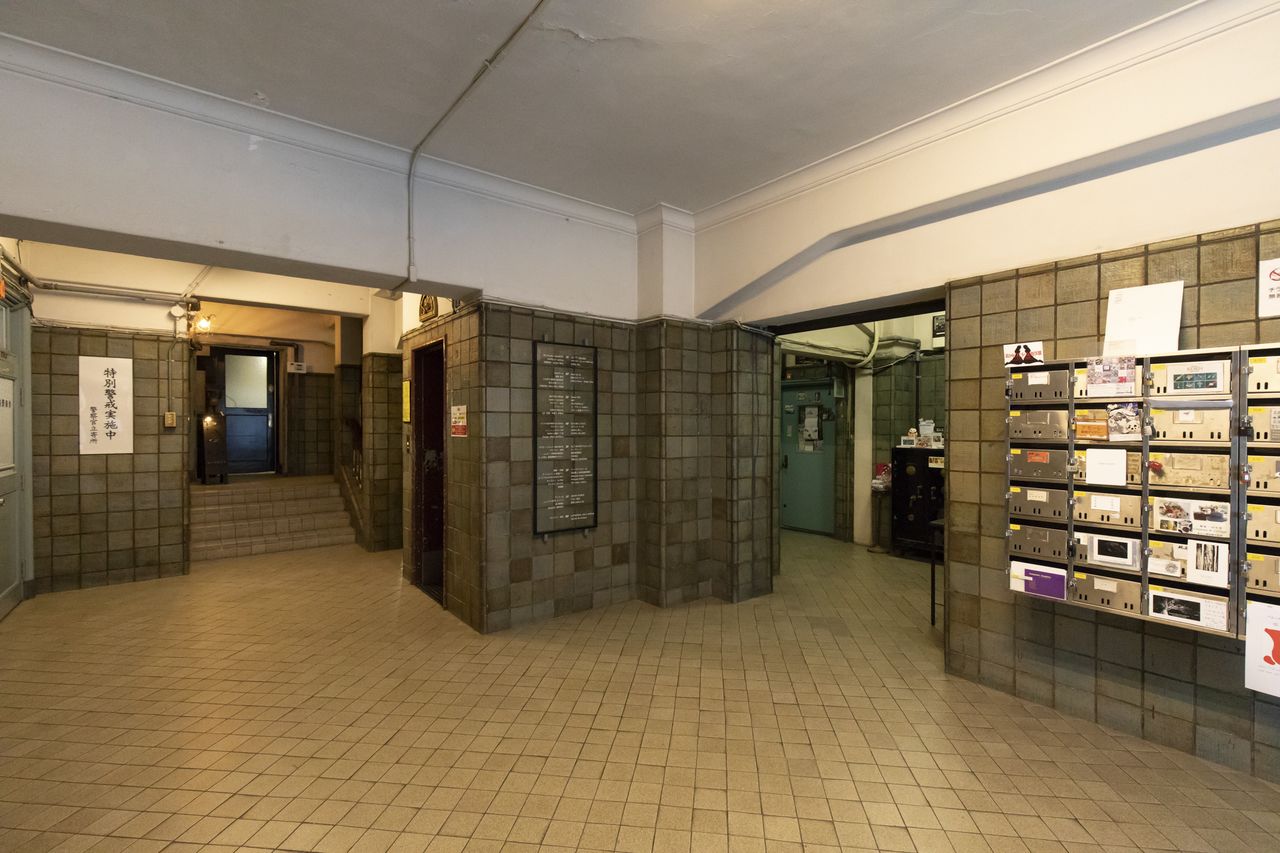
The main hall entrance. The building has a total of 70 suites.
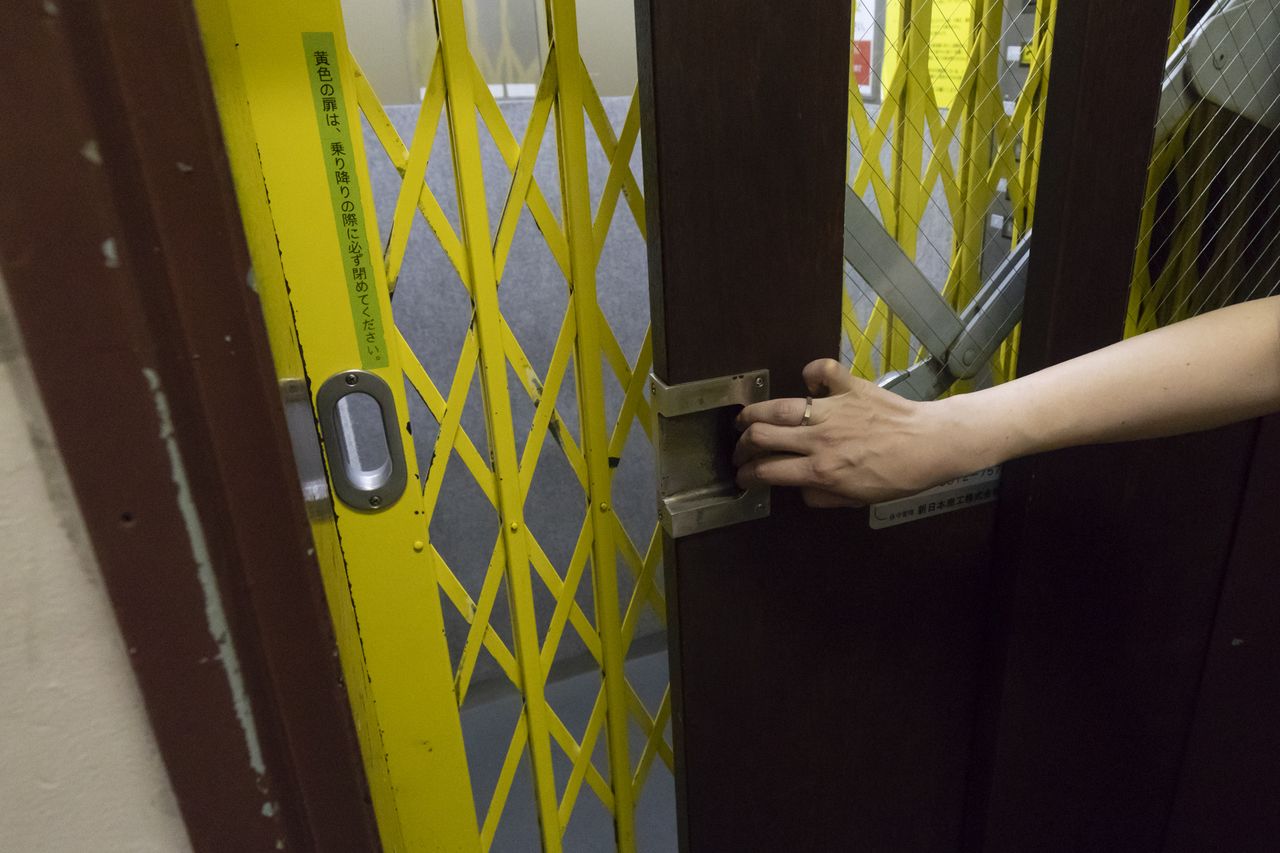
The manually operated elevator doors.
Originally known as the “Ginza Apartments,” the Okuno Building actually comprises two buildings standing side by side and coupled together. The main building, on the left as one faces the entrance, was built in 1932, and the so-called New Building on the right was completed two years later. The story goes that the building originated when Okuno Jisuke—the grandfather of the present owner, Okuno Tsuguo, who made his fortune in the manufacture of railroad parts—built a parts factory on the land where the Okuno Building presently stands. The factory was damaged in the Great Kantō Earthquake of 1923, and was relocated to Ōimachi thereafter. In its place, the elder Okuno decided to take advantage of the real estate potential of the area and constructed a building on the site. The building was made of reinforced concrete, so as to be capable of withstanding subsequent earthquakes.
Okuno Jisuke called on Kawamoto Ryōichi, an architect he knew, to produce the designs. Kawamoto had served as the head of the architecture department at Dōjunkai, a firm known for its namesake Dōjunkai Apartments, a group of apartment buildings made of reinforced concrete between 1924 and 1933 in the Tokyo and Yokohama areas. After starting his own business, Kawamoto designed such structures as the brick Kudan Kaikan, which stands to this day in Tokyo’s Kudanshita district. The building he designed for his friend Okuno would be one of the top luxury apartment buildings in the Ginza, owing to both its reinforced concrete construction, which was still a novelty at the time, and to its having an elevator for the use of its residents.
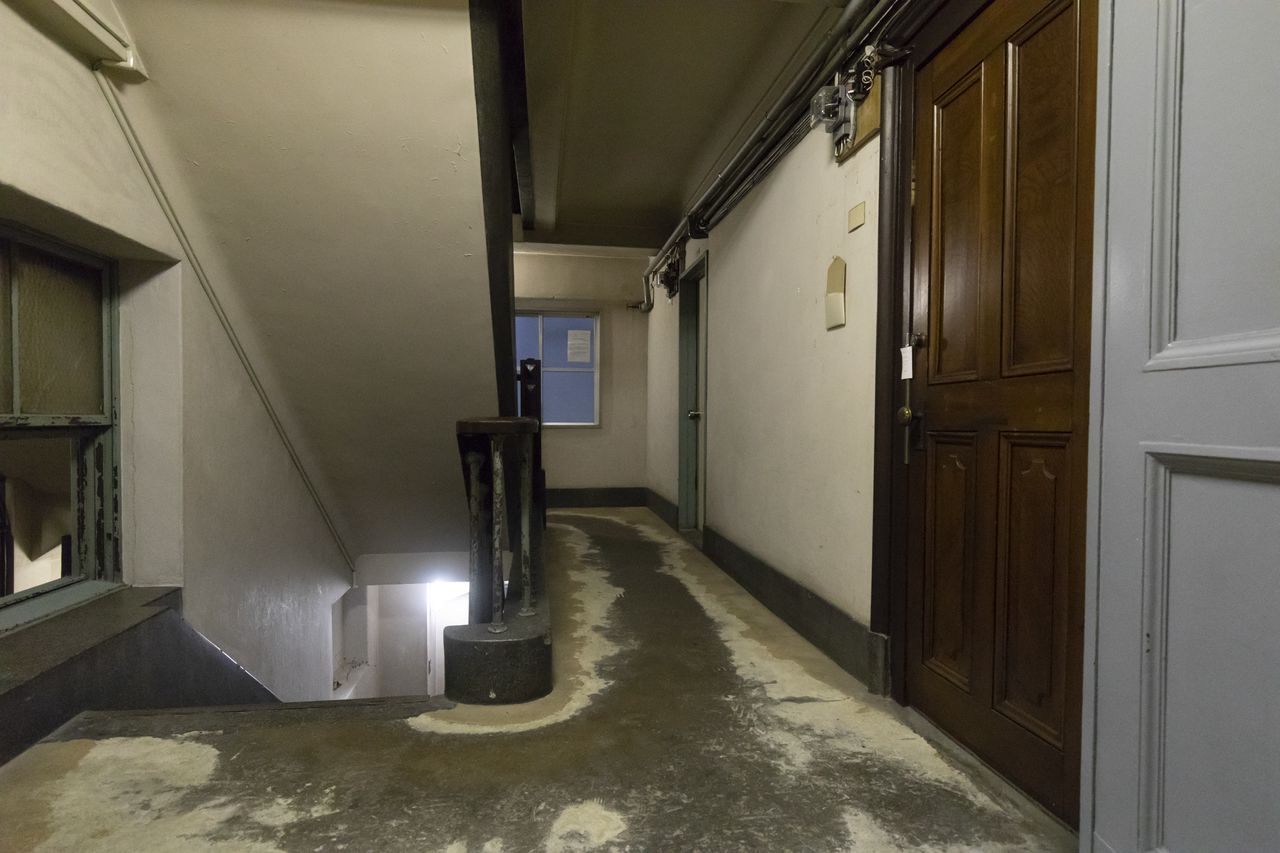
Portions of the hall floor finish have long since been worn away by foot traffic.
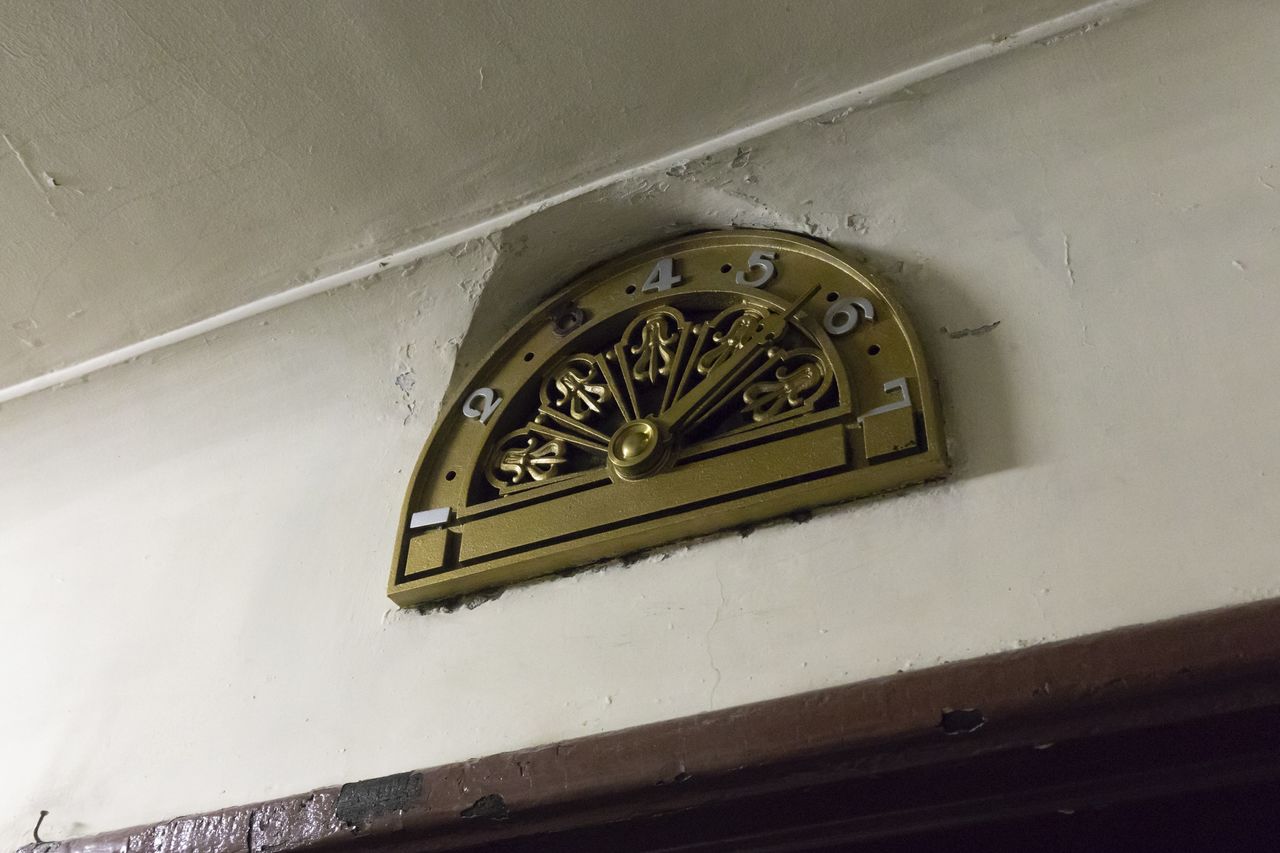
The elevator floor indicators are in a modernist design of the period.
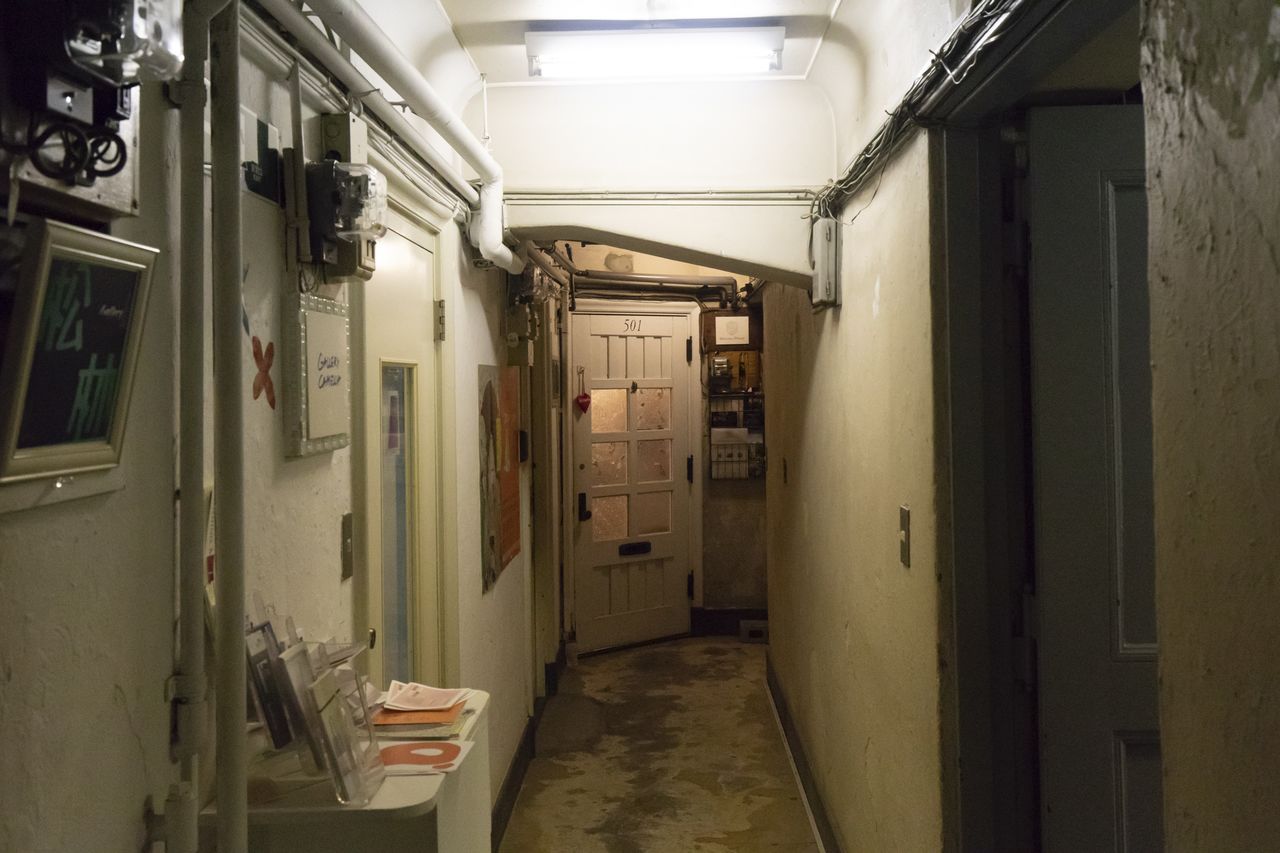
The building hosts numerous art galleries, decorated in ways that fit with the overall atmosphere of the place. This concentration makes the building important to artists who want to exhibit their works in Ginza.
The Last Apartment
People interested in this building are advised to visit the Ginza Okuno Building Room 306 Project, a unique effort at preserving one of the building’s apartments. Apartment number 306 is opened to the public on the sixth of each month, when participants in the project, who maintain a permanent occupation there according to a duty roster, show visitors around.
“The Okuno isn’t merely an old building,” says Kurota Hirofumi, instigator of the project. “It’s a time capsule of the Shōwa era, retaining for future generations the histories and cultural works of the people who lived here.”
After graduating from college, Kurota became an artist, working chiefly in videography. His involvement with the Okuno Building stems from his association with an art gallery located there.
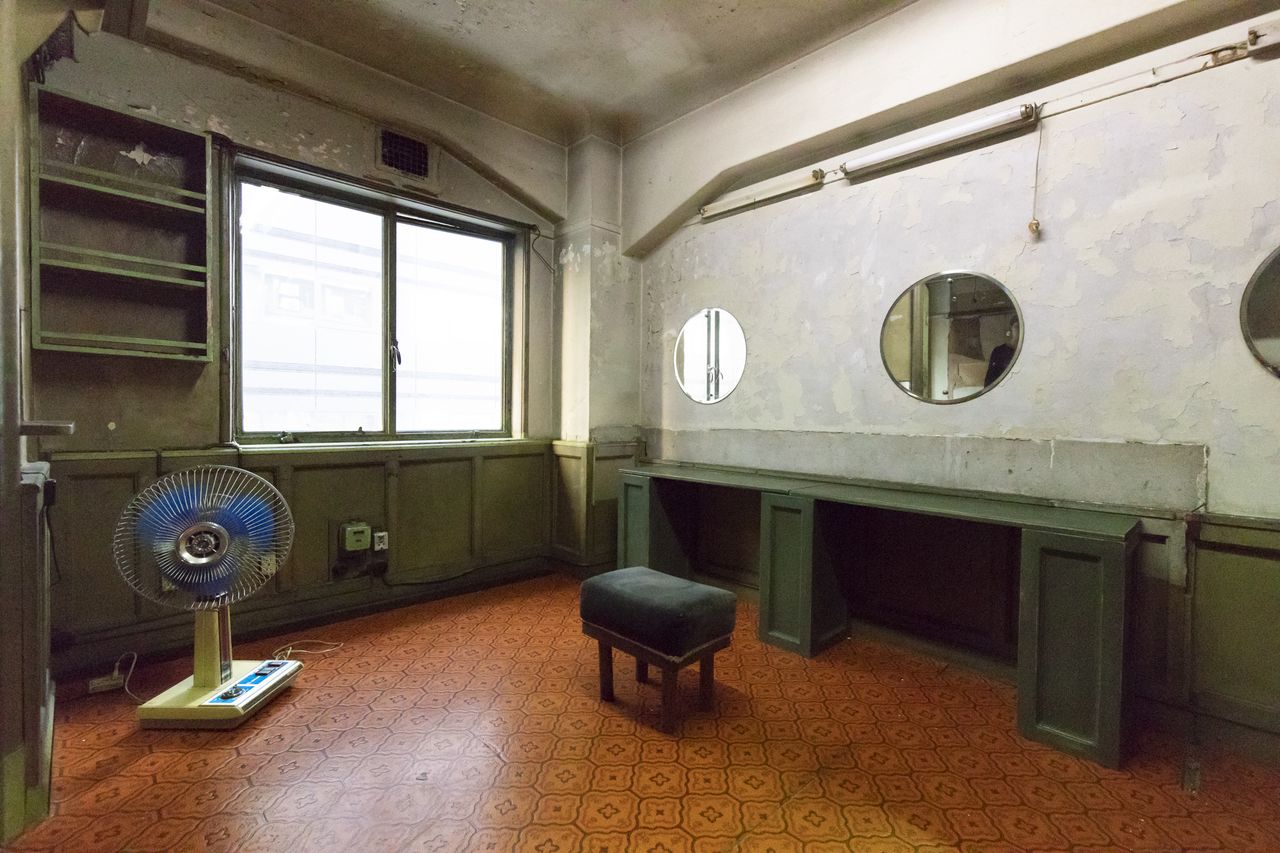
The interior of Apartment 306.
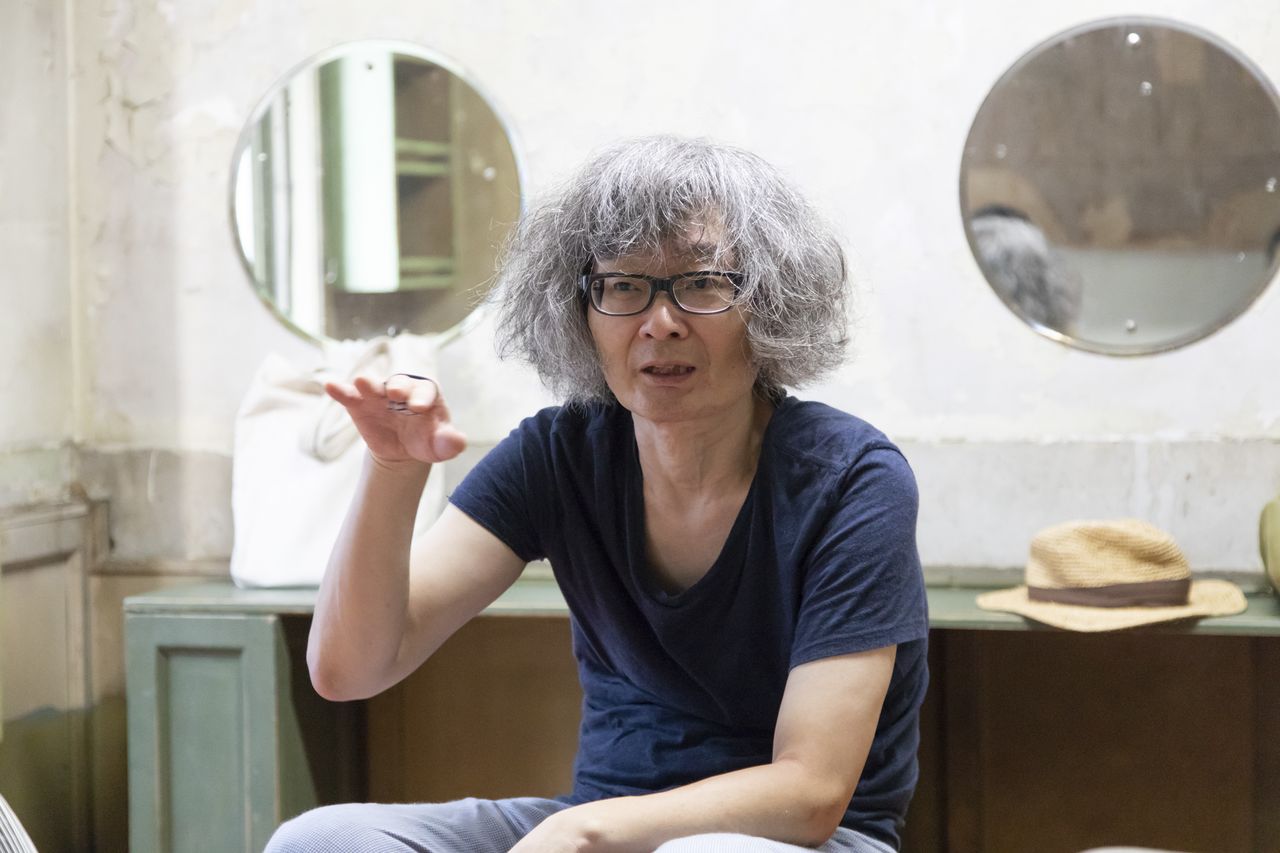
Kurota Hirofumi, instigator of the preservation project.
The original resident of Apartment 306 was a woman named Suda Yoshi. Born 1909 in Kakunodate, Akita Prefecture, her life as a beautician coincided with the tumultuous Shōwa era. Described as stylish and attractive, as well as having a fondness for beer, Suda had a salon in an apartment of the Okuno Building where she cut and styled hair primarily for an established clientele. In the late 1970s she closed up shop and turned the salon into her personal residence.
Consequently, Suda became the last private resident of the Okuno Building after it was converted into leased commercial space. She died there in 2009 at the age of 100. Kurota and his associates leased Apartment 306, saving it from renovation, and began a preservation campaign. Today the project hosts art installations and exhibits, as well as film screenings, all of which are conceived with the atmosphere of the room itself in mind. The project is also working on a documentary about the history of the building.
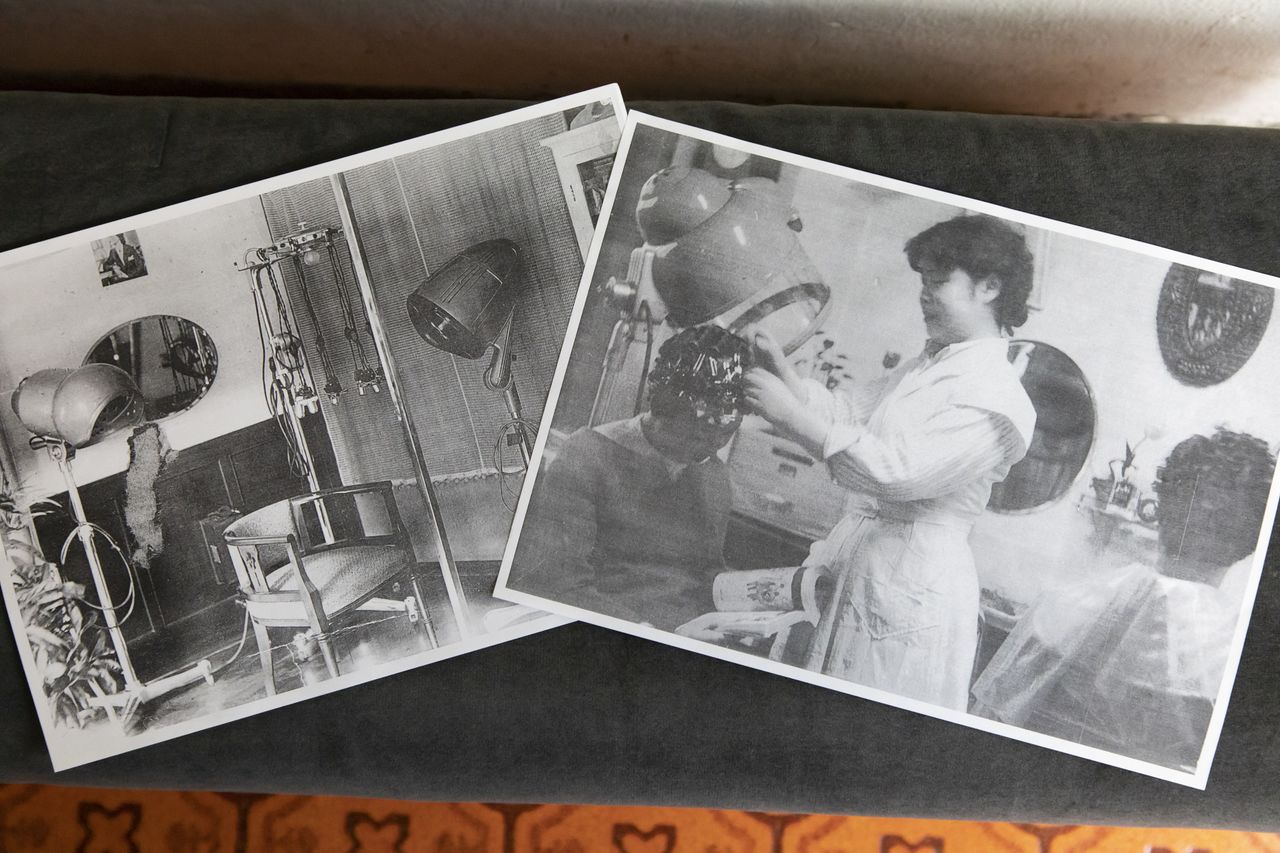
The Suda salon during its heyday.
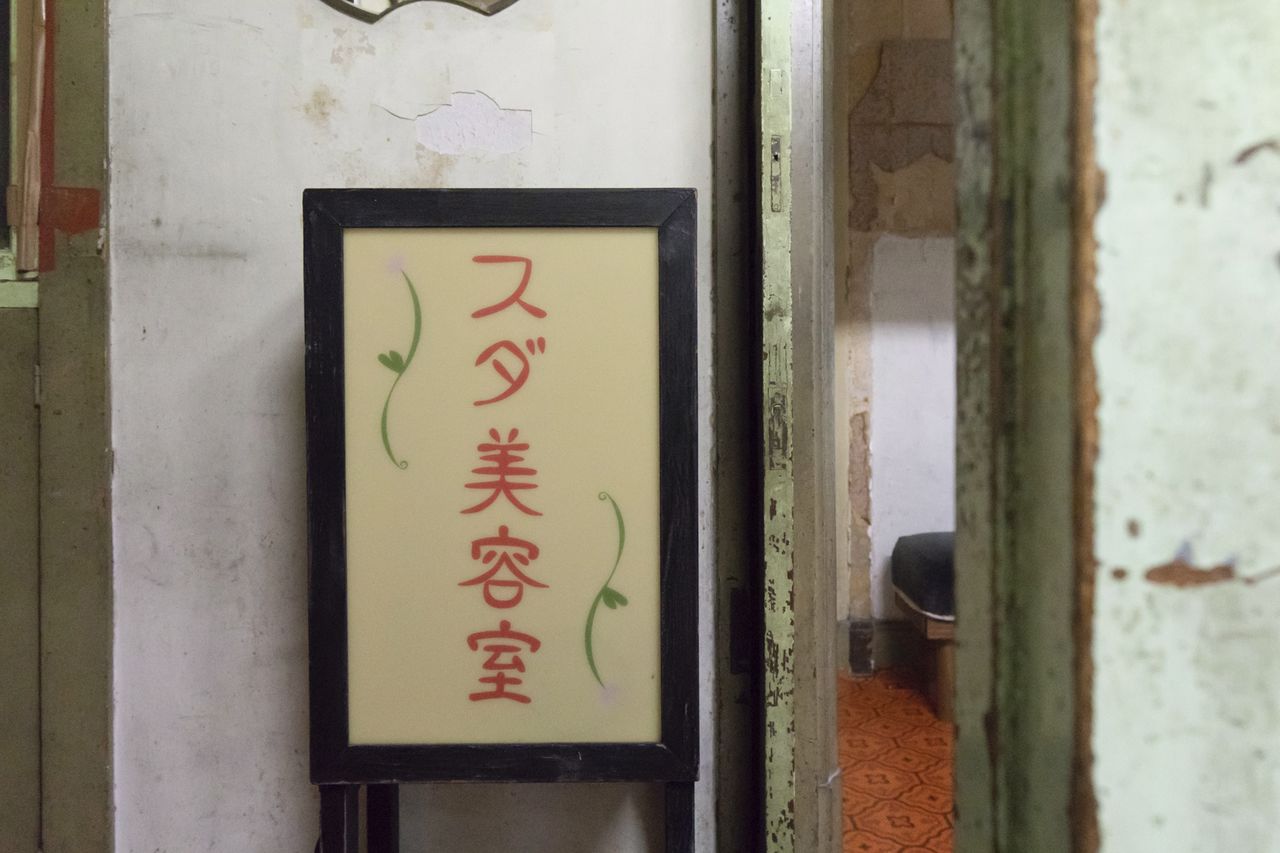
A sign created by the Apartment 306 Project team is redolent of the time when Suda Yoshi operated her salon here.
An Opportunity to Look Back
Considerable effort has gone into the fixtures of Apartment 306 given the size of the apartment, which is about eight tatami mats in size (less than 15 square meters). There is a gentle curve in the ceiling, and attention has also been paid to the designs of the walls and floor. A planter box has been placed outside the window for growing flowers and herbs. When the building was first erected, it was possible to see the sea from that window. The salonlike authenticity of Apartment 306 is also retained in the mirror on the wall, a small pane of glass on the telephone stand, and posters and signage.
The building featured state-of-the-art infrastructure and fully featured shared spaces in its heyday. It was fully heated and featured a shared bath area in the basement, as well as a laundry area and lounge in the penthouse. With such facilities, it symbolized the kind of urban lifestyle to which many aspired in the early Shōwa era.
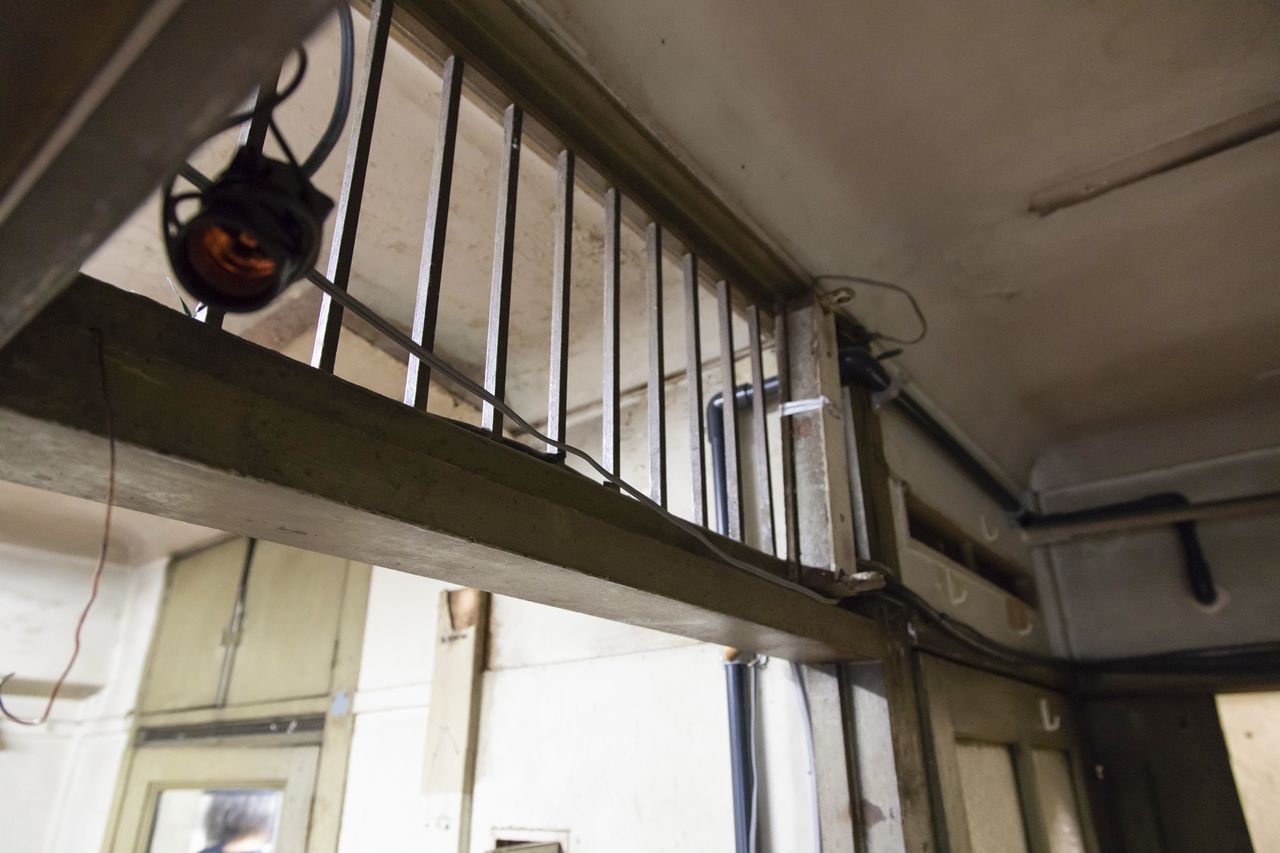
The attention to detail extends to the fit and finish as well.
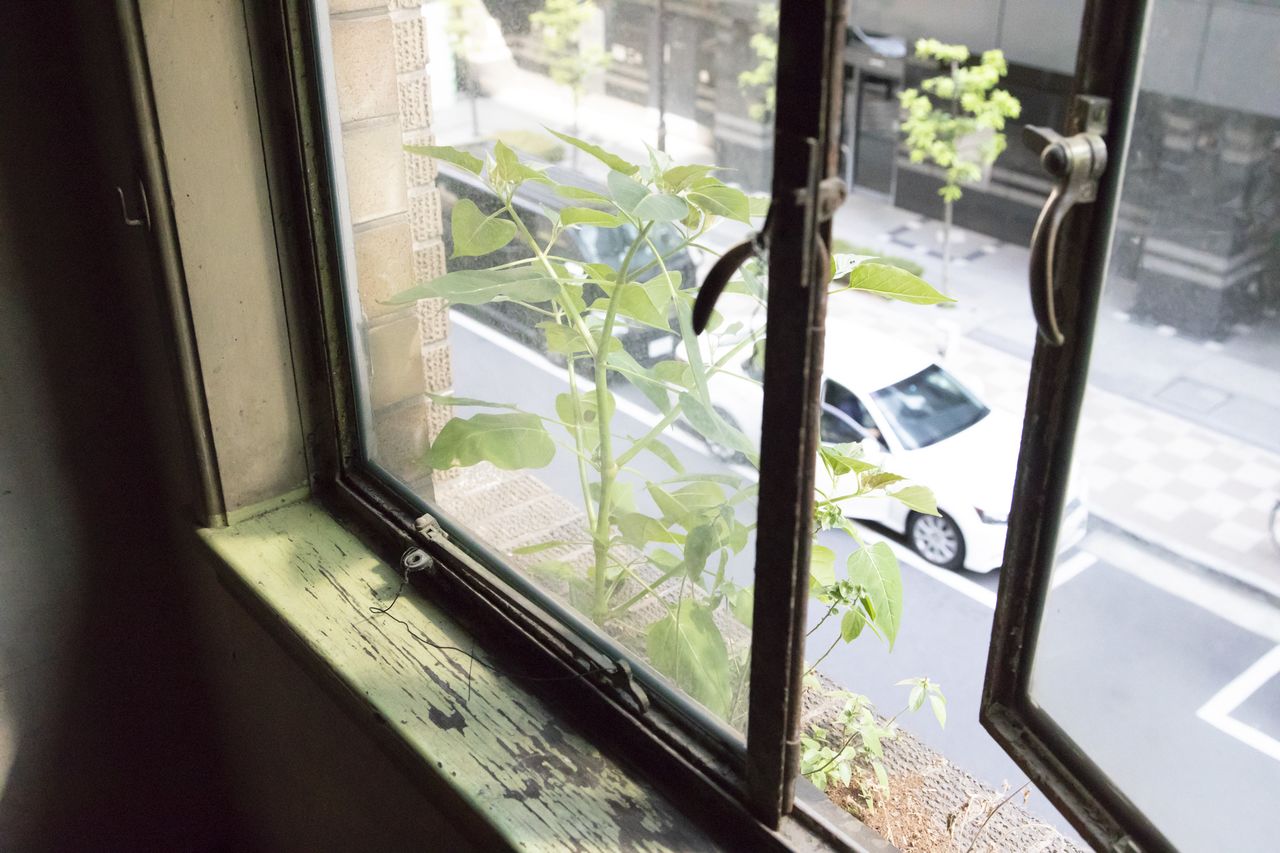
The window with its outside plant box offers a respite from urban life.
“People in the movies have lived in the Okuno Building, such as art director Yoshida Kenkichi,” says Nishimatsu Norihiro, another member of the project. “It was one of the top luxury apartment buildings of its day, after all, which likely attracted many leading cultural lights.” As a TV producer, Nishimatsu himself was charmed by the building when he visited art galleries there in the course of producing a fine-arts show.
“Throughout its history, Japan has consistently moved ahead by a repeated pattern of scrap-and-build,” continues Nishimatsu, “that is, knocking down the old and putting up something new in its place. I hope that Apartment 306 will provide an opportunity to reconsider this trend—an opportunity to pay homage to the old and look back on our past.”
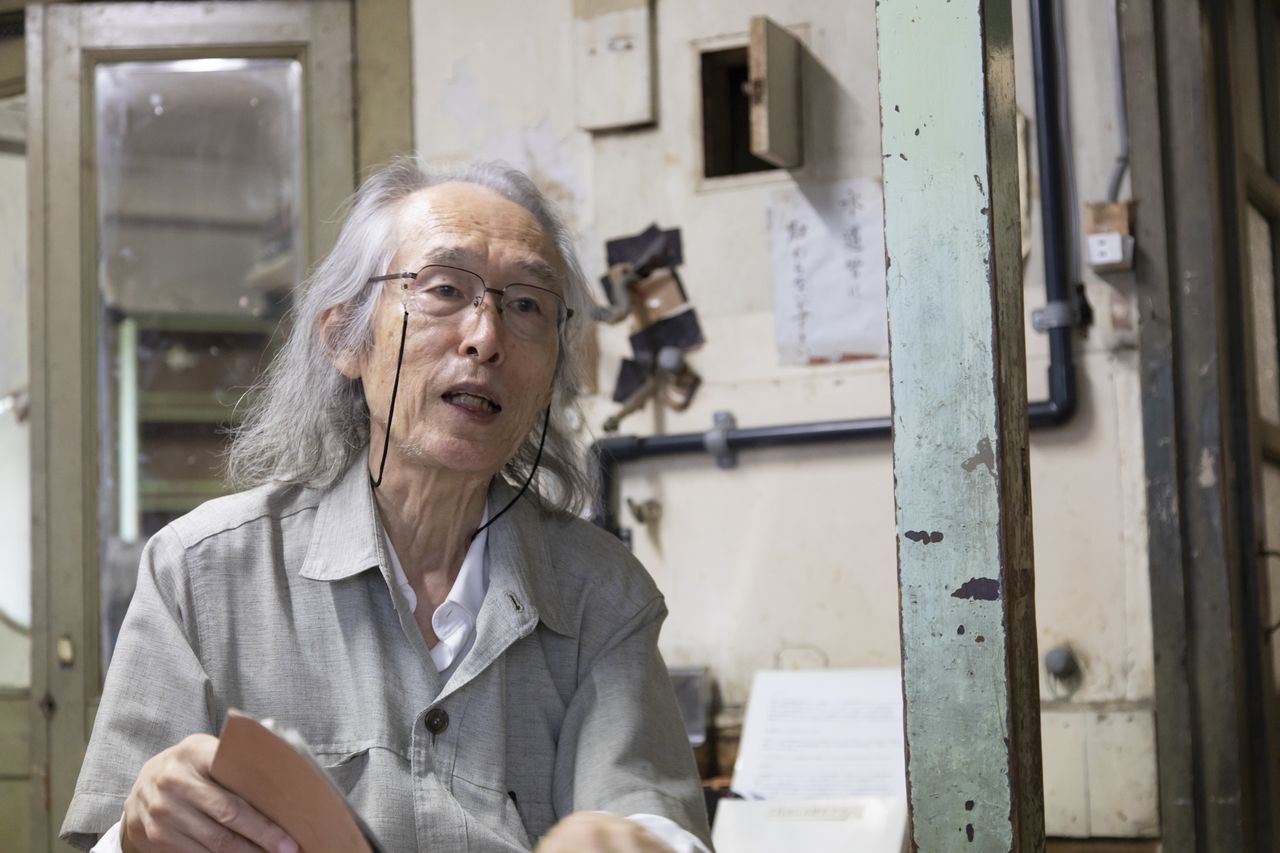
Nishimatsu refers to his notes as he relates his story.
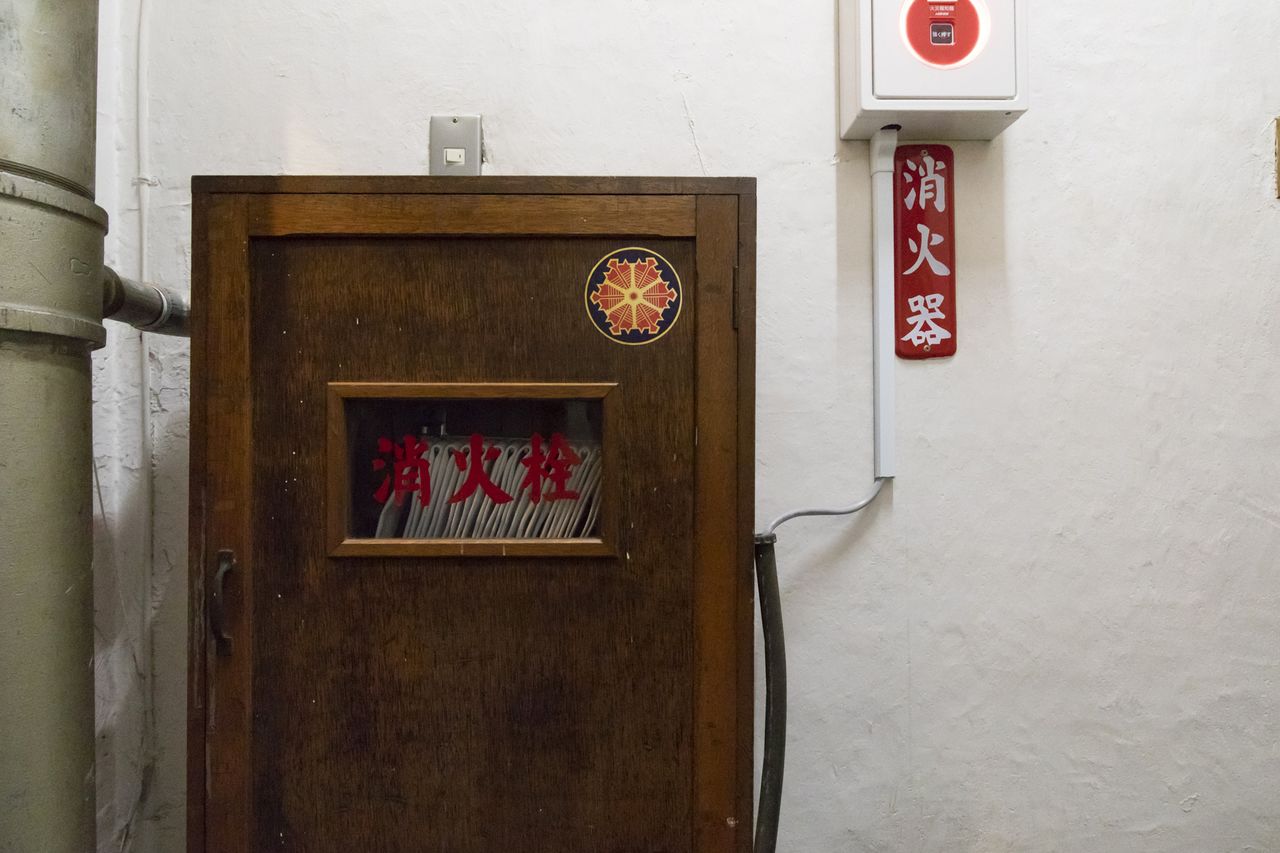
A fire hose fixture very much of the period.
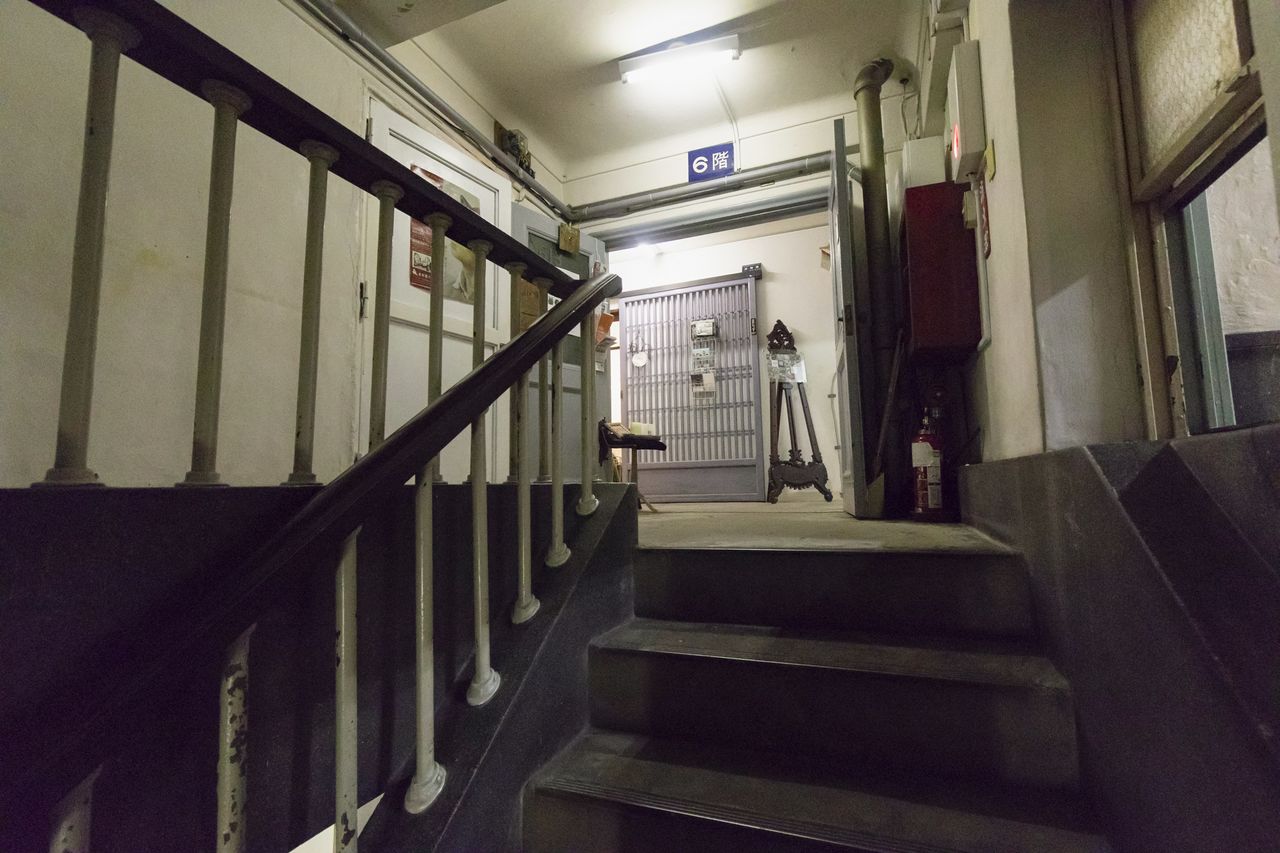
Even the windows and staircase railings in the hallway have a certain elegance.
The project also receives inquiries about renting out Apartment 306 for private functions or as a photography location. Unless otherwise indicated, however, the suite is available for use only by persons connected with the project.
“The purpose of the project is preservation, not commercialization,” says Kurota. “We do host events that further our aims and objectives, however.” One well-received event was haircuts offered by a barber on the premises as part of an effort at a re-enactment of what the room would have been like when it was used as a salon. “It was a poignant experience for visitors from the modern era, seeing themselves in the mirror that has been in this room ever since Shōwa times as their hair was cut and fell away,” says Nishimatsu. The project also plans to research and record the life and times of Suda Yoshi, and is collecting statements from persons connected with the building. The present building owner is himself a participant in and wholehearted supporter of the project.
There are fewer historical buildings in the heart of Tokyo than there are in cities like London or Paris. Aside from the scrap-and-build phenomenon that Nishimatsu mentions, another reason for this state of affairs is the repeated revisions to the earthquake safety regulations in the Japanese building codes, which is perhaps only to be expected in a land that has experienced warfare and major quakes alike. Seen from that perspective, this relic of early Shōwa Ginza gives a rare glimpse into the lives of the people who lived through those times. It’s worth a visit to the art galleries and shops in the Okuno Building, as well as the functions in Apartment 306, to soak up that atmosphere.
(Originally written in Japanese. Reported and written by Okamoto Mai. Photography by Saitō Jin. Banner photo: The manually operated elevator as seen through the window.)
